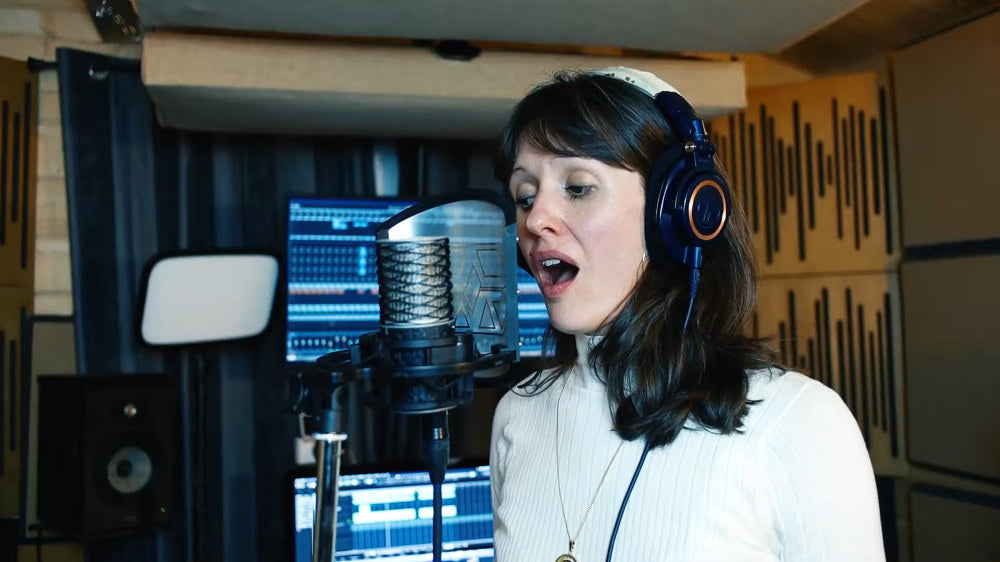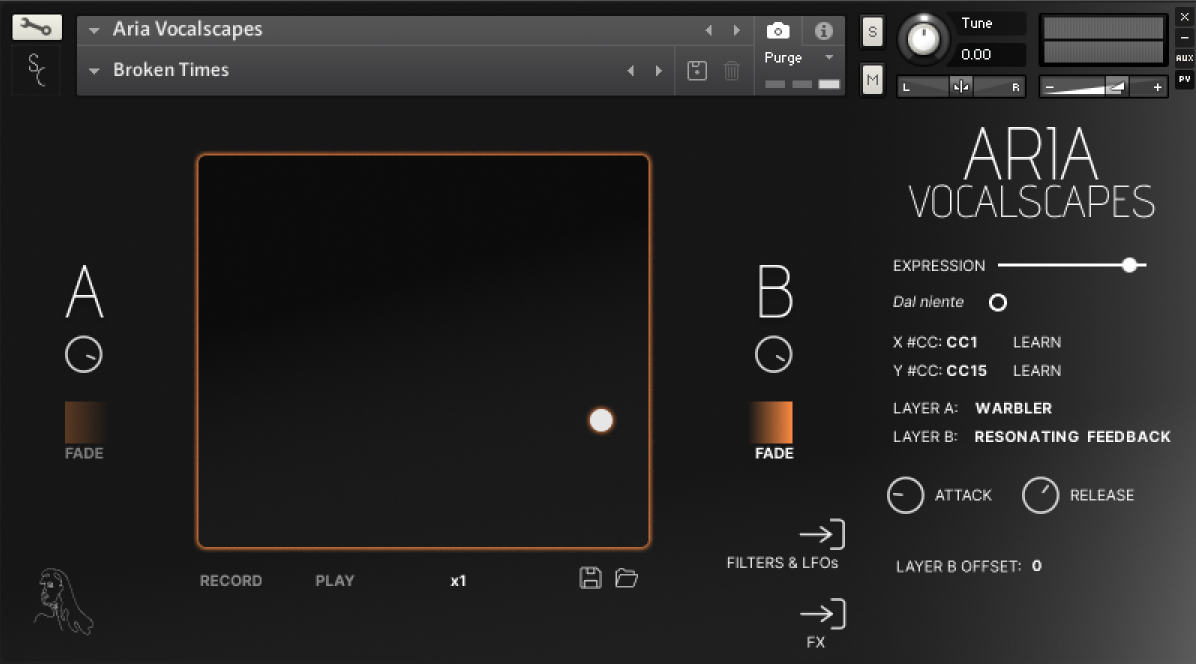Emma May Price is the captivating voice behind the incredible vocals in our hugely popular Aria Vocalscapes virtual instrument (and the free Aria Libera library). A classically trained soprano, Emma is also the wife of Alessandro Mastroianni, the creative mind behind Sonora Cinematic. In this interview, we talk to Emma and Alessandro about the process of recording the vocals together for Aria Vocalscapes, how they were processed and their future plans for the Aria Engine…

Hi Emma, first of all, can you share your story about becoming a classically trained soprano, and what have been some of your proudest moments/credits?
I can barely remember a time when I wasn’t having singing lessons; I started at a very early age and soon realised that my voice was suited to “classical” repertoires. At the age of 16 I won an Exhibition Award for one of my Trinity music exams for voice, but I also loved studying languages, so at university I combined music and language studies. Singing has always played an important role in my life, particularly with a view to collaborate regularly with Alessandro on compositions and sound libraries. We are working on an album currently, which we are co-composing, and continuing to develop Aria Vocalscapes.
What was the inspiration behind the creation of ARIA Vocalscapes and how did the idea came about?
Alessandro would often need a textural vocal part recorded for a track he was composing, and with him developing all the other virtual instruments that Sonora Cinematic has produced, it seemed a natural step to take, to create a virtual instrument out of my voice. I was very excited about this type of work: I enjoy the precision of it, knowing exactly what we had to record in every session. I will not move onto the next recording until I am completely satisfied with the result, which can also be frustrating for Alessandro…
As a classically trained soprano, how did you approach recording vocals for this Kontakt player instrument differently from traditional vocal recordings?
Recording vocals for a virtual instrument has made me hyper aware of my vibrato, and also has helped me find my “natural” voice, rather than an imitation of a classical soprano. I am enjoying this process a lot. I am looking forward to applying what I have learnt doing these recordings to the new library we’re working on, which will feature legato.

What recording equipment did you use?
We did a lot of test recordings before committing to a vocal chain, we tried several microphones including a Neumann U87 and a high-end U47 clone. Interestingly, the microphone that best captured the tone of my voice was a much more humble Aston Origin. The rest of the signal chain was an SSL Super Analogue preamp with a touch of compression.
What, if any, challenges did you face, or indeed, were there any particularly memorable moments from the recording sessions?
It certainly wasn’t without its challenges! I was heavily pregnant with our daughter Anna and for this reason we had to spend a lot longer over the recordings than originally planned, splitting them up into several sessions, to allow my voice to recover between times.
That said, I found that being in the later stages of pregnancy can improve my voice, as I am completely relaxed and have no expectations of myself, which unleashes my voice in its purest form, albeit tiring work!
We did have a lot of fun with the “tiki tiki” and “taka taka” vocalisations; Alessandro always seemed to find an excuse to demonstrate them and their variations to me…
Alessandro, could you walk us through how you created some of the more heavily processed vocals found in Aria Vocalscapes?
So many different things! The most frustrating were the few articulations that I realised passing the vocals to tape. I have used an old Tascam Portastudio that was modified to run much (much!) slower than originally intended, resulting in a very low pitch (if memory serves me well around 1 octave and a half lower than the recorded note). This involved matching the pitch by ear and tuning it in post note by note but the result is very interesting. Other than that, anything from running the vocals through my big modular synthesizer, to guitar pedals, granular processing and more.

What kinds of musical genres or projects do you envision ARIA Vocalscapes being particularly well-suited for?
As mentioned, the original intended use-case was cinematic music that requires textural vocals, those beautiful organic elements that contribute to the wall of sound that as composers we often look for. That said, Vocalscapes works incredibly well for all kind of ambient music, electronica and I’ve used it successfully on a few tension-driven tracks.
Are there any future plans or updates for ARIA Vocalscapes that you can share with us?
Aria as an engine will be hosting a plethora of our new libraries, Vocalscapes was only the first one of a series. We are also working on re-releasing our best seller Poiesis Cello on this new engine, which we’re very excited about. Vocalscapes in particular will get a free update (version 1.1) very soon with some exciting new features and a few more presets.
In terms of working with Emma again, a new library is already in the works, this time focused on vocals better suited for more “exposed” writing. It will be the perfect companion to Vocalscapes.
Discover Aria Vocalscapes here

